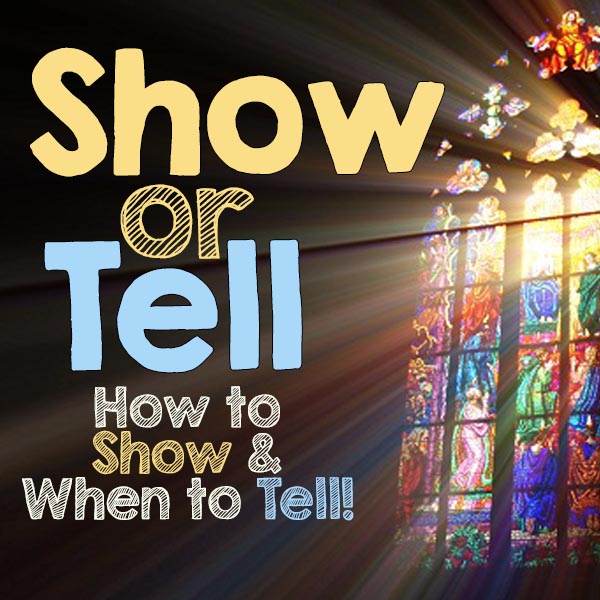Last week we took a look at Active Description and 4 Tips on how to wordpaint for emotional effect. This week, let’s take a look at incorporating those 4 Tips …
Extreme Wordsmithing Makeover: 4 Tips to writing ACTIVE description
Continuing our Extreme Wordsmithing Makeover series, we spent much of August diving into STATIC description and I taught you a technique called FOCUS, an acronym that reminded us to first …
Using Symbolism in your Description!
A Quick and Easy Tool for Writing Description (part 2) This month we’ve been talking about Extreme Scene Makeover and diving into description. I introduced the acronym FOCUS, a …
How to Show and When to Tell
I hope you’re busy writing your amazing works of NaNoWriMo fiction!
I thought, as we dive in, it might help to understand what editors mean by “Show, Don’t Tell.” Listen, I know it can be confusing. Especially since there is not only mis-information and bad teaching out there, but also because there IS a time Tell!
Showing, not Telling is not about describing everything that happens. And Telling has nothing to do with narrative and backstory. Narrative and backstory (and even action) get a bad rap because often, during narrative, backstory and action, authors drop into “telling” without realizing it. Describing ACTION by saying “John shot Bill.” is not telling. It’s action. But adding: “John felt sorry when he shot Bill,” would be telling.
See, I know. Confusing.
Here’s the bottom line: Showing is about helping the reader experience the emotions of the character. Showing brings us into the mind and heart of the character to understand their emotional journey.
Here’s how: If you say, ‘She felt grief,’ or even, and this is more common, ‘Grief overtook her’ you are not just telling us what emotion she’s feeling, but you’re pinpointing one emotion your reader must feel with the character. Instead, show us how despair makes her feel through how she acts, what she thinks, what she says and how she sees her world. Let us into your character’s head.
Telling is when you tell someone how to feel. It relates to the emotion to the story, not the narrative, backstory and action.
Conversations: What to do with your WriMo Chapters/How to edit a scene
I found Sally in line for coffee as I entered the coffee shop. She had already dumped her bag onto a chair, had already tugged off her gloves, her wool …


